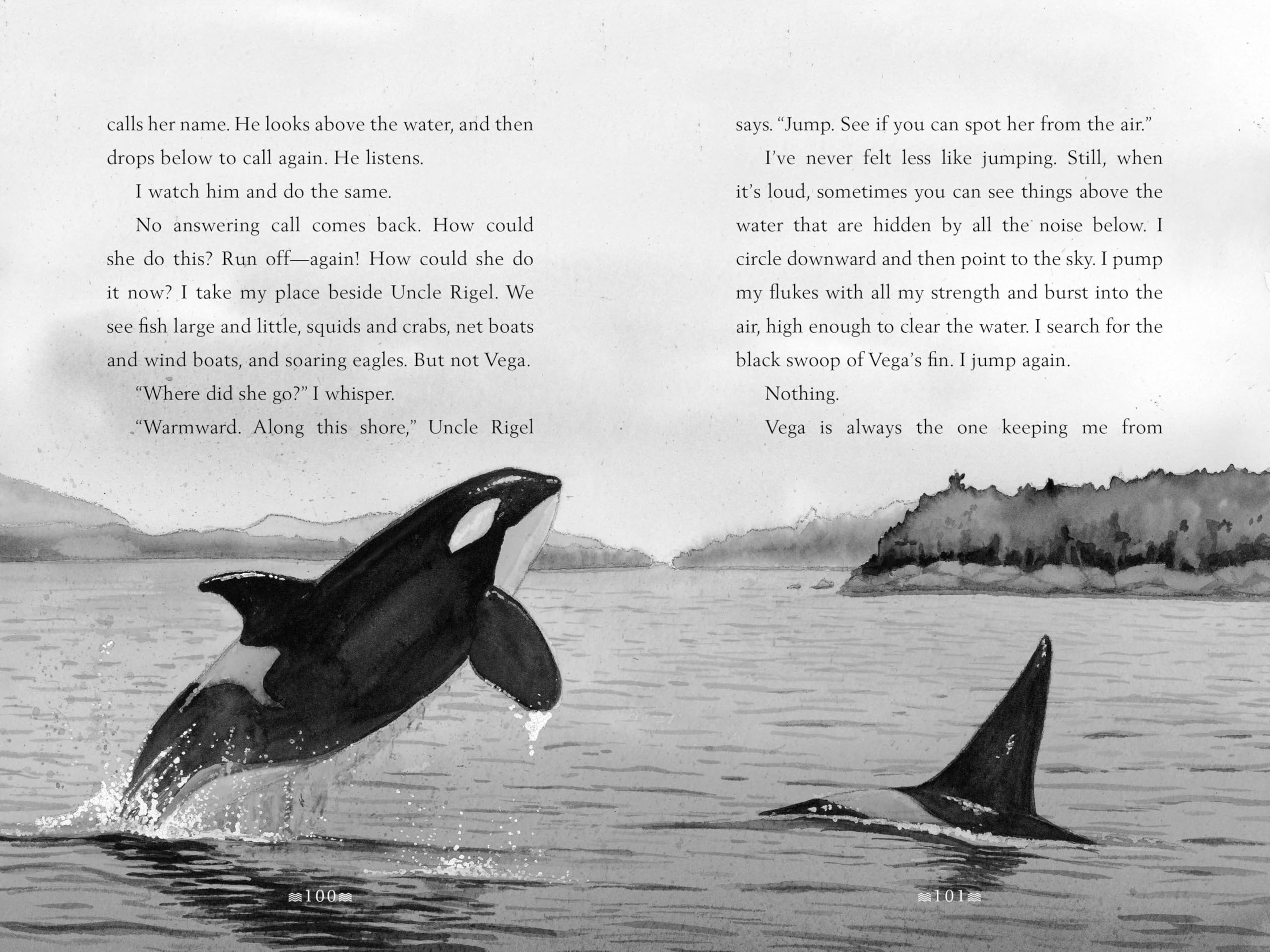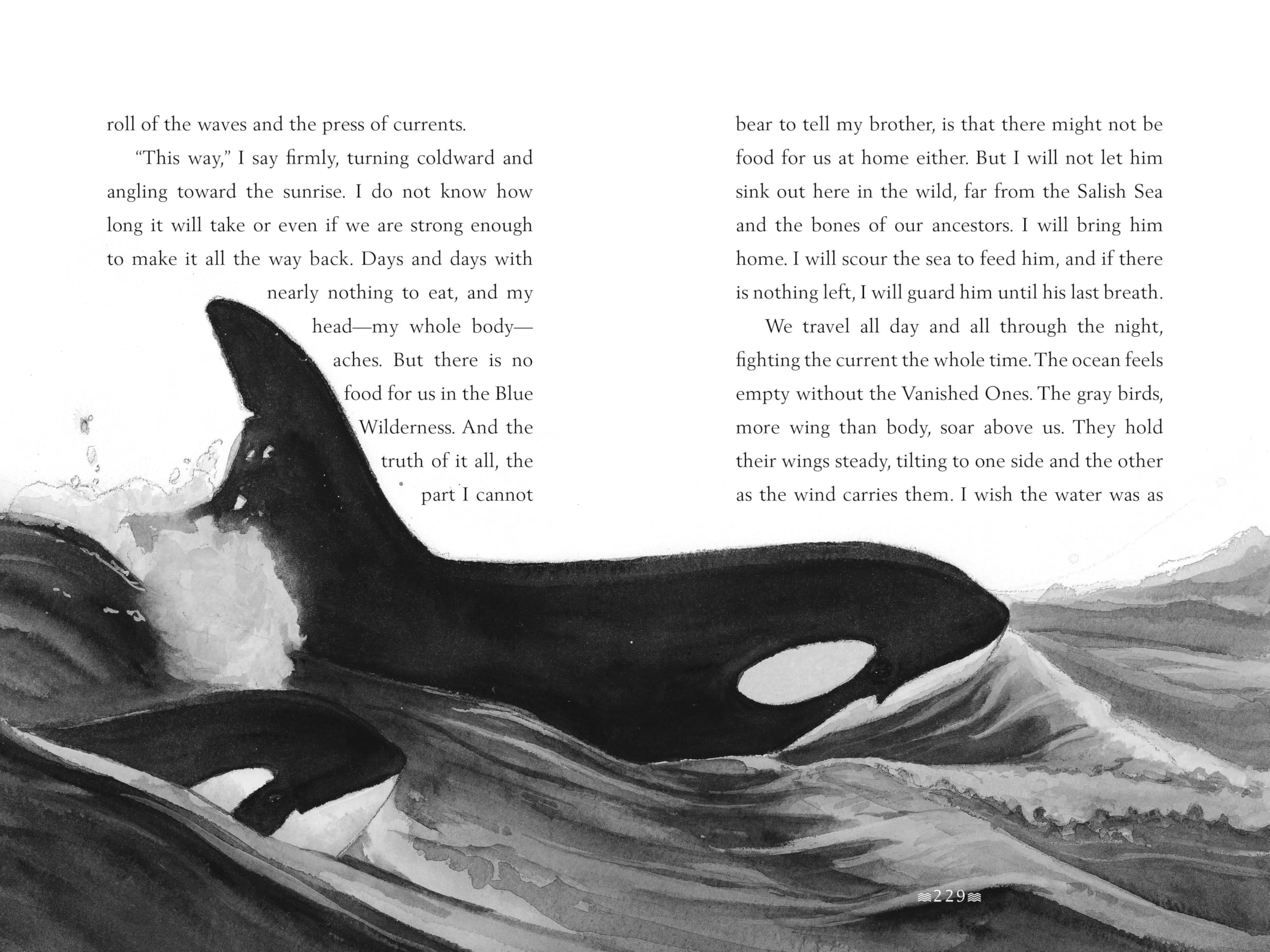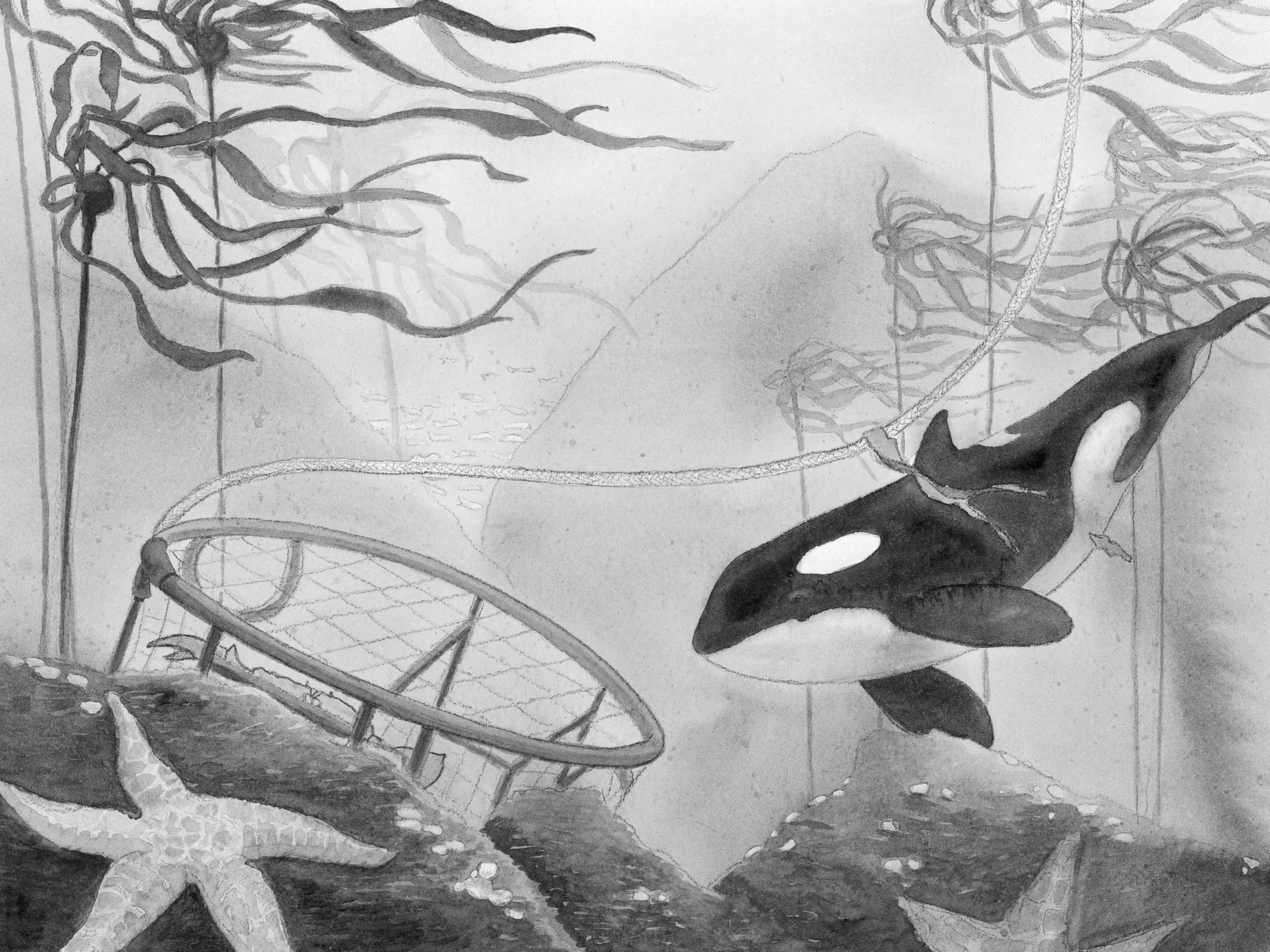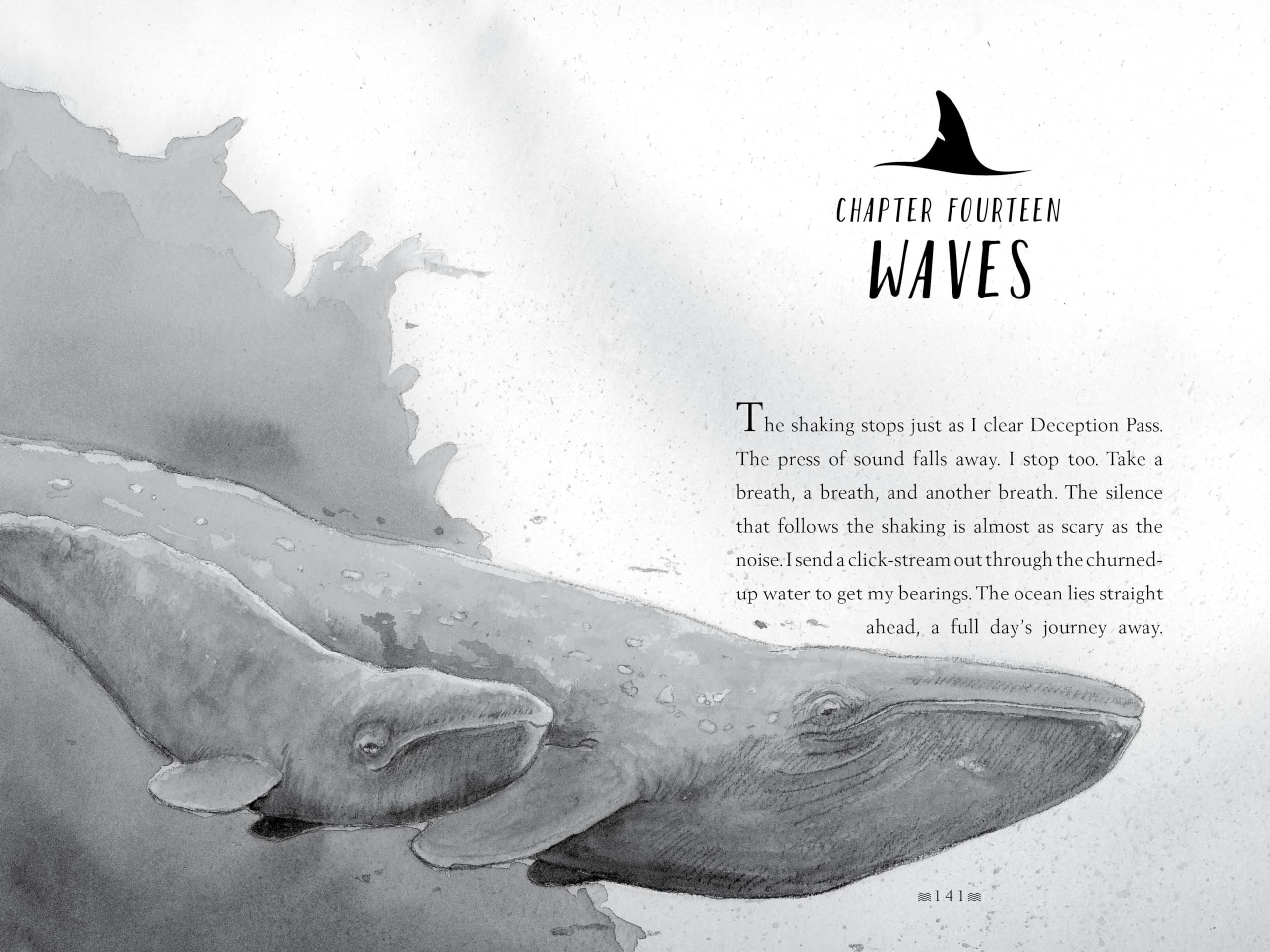





Full description not available




L**.
Wonderful book!
Wonderful story. Highly recommend.
R**
3rd, 4th, 5th, and 6th graders would LOVE this book! Way To Go Again Rosanne Parry!
Another thought-provoking, seriously engaging, "Wow! I'd never considered things from that perspective!" slam-dunk with students, book from Rosanne Parry!Back in 2018-2019, my 4th graders enjoyed the chapter book "A Wolf Called Wander", by Rosanne Parry (see that review, also here on Amazon) and right away, upon finishing that book, we were searching for other 1st-person (or shall we correctly say, 1-st animal/mammal perspective) book from this author. We had found out the author had "A Whale of the Wild" in the works and I immediately pre-ordered it through Audible and set my calendar to remind me to check bookstores/Amazon in September of 2020 to see if this book was finally available for our verocious bookmunching appetites! Magic! Jackpot! It was, and so in an interesting twist, about that timing was that with the entire COVID-19 pivot to eLearning, I had been bumped up to 5th grade, 100% online learning/teaching from home for 7 months and many of my 4th graders that had read "A Wolf Called Wander" were also my 5th grade eLearners. They were incredibly excited that they could continue reading this author's books with me. Ergo, verocious bookmunching appetites. This book is mostly 1st-person narration by Vega, a female Orca whale and a few of her relatives too. Personification. Onomatopoeia. Lots of fascination, wows, no-ways, and that's so cools, could be heard by the 5th graders as we read this book. Totally engaging!With a document camera to show the pages through Zoom and through our live sessions, we devoured this book, 33 fifth graders and those that knew nothing of the previous book, new to my eLearning classroom and maybe even our school, were 100% positively influenced to enjoy this book by those that were my 4th graders, whom LOVED Wander.Here are our take-aways from this book. Long overdue review, but such a challenging set of past two years for all educators! Understatement.Students were fascinated with Vega's 'swim shadow' and how she refered to 'reshaping my clickstream' to locate salmon and even see the shape of her soon-to-be-born sister inside her mother's belly. "How does that work?" They wondered.The idea of adapting, together, to collectively meet the needs of the whale family with many generations of relatives, resounded with several students whose families have grandmothers, aunts, uncles, and cousins, all living and working together. They could relate to Vega's family."Share, share" being the first words whale babies learn, created conversation among students; contrast to "No, Mama, and Dada" for human babies being the common 1st words. They discussed food words vs affection words and recollection or recognition words.The family code system of "not eating birds" reminded students of how some of their families do not eat certain foods on Fridays and fasting periods, so this idea stimulated discussion on similarities with "Wander" and giving thanks prior to comsuming and the wolves having had a code system, so perhaps it really could be that many species have code systems they honor. A few students felt they had more respect for creatures given this idea.One young man enjoyed Vega's eagerness for her baby sister "Capella"to be born because Vega wants to keep playing games and wants to be needed; he said he felt the same way about his little brother's arrival.Students were taken aback at the way an inanimate object, a boat's motor, was viewed as an aggressive predator by the whales when they'd learned Vega had been "bitten by a boat's growler six seasons ago". The personification throughout is phenominal! And the onomatopoeia too! "I let out a deep CHAAAH of gratitude."Like humans, whales fear being lost. That was something the students hadn't considered before."Leap, spin, roll, fizz" being used to describe the very difficult work involved in whales giving birth was eye-opening for the students who said they hadn't known the dangers of birth for very large mammals. And the idea that creatures could seek to blame and even seek revenge on humans whom they perceive to be at blame for poisons in water that could have caused the death of whales, THAT was a solemn several moments.Just as humans sit on hills watching whales, whales too, being curious, watch humans from the water. As the students said "Really? So my fascination with them might also be their fascination with us? Whoa." The way little events like that happened while reading the book really prompted a lot of "I'd never even realized that might be possible." moments. Like "shivers & groans" for mother's nightmares. Students said "Wait, whales can have bad dreams? Yes, do they have brains with memories and experiences? Wowwwww! Really?!"From rescue, using tools to solve a problem in the sea to needing to feel useful and trying to help other orcas, it was as if there was realization happening that complicated human problems and experiences and relationships are not uniquely human, they are also experienced by animals, mammals, creatures.......The whale's names for things like the "thingless carrier" (ship), "resting ritual" (graveyard), "grabbers" (hands), "land boats collapsing into the sea" (cars falling off a collapsing bridge), "boat blood" (oil in the water<---and this one reminded students of the black ice, broken glass from Wander)......all presented unique perspectives students found fascinating and worthy of much discussion.The benchmarks for reference, such as the "pearl-colored hair" showed the obvious use of nature to describe what humans would say is grey/silver. This realization provided much discussion on what other whale sights (things that are commonly viewed/visible) might be a benchmark for colors. Even "sticks with a raven-tailed shape at the end" showed us that nature is consistently used as a benchmark reference by whales, helped the students expand their schema of benchmark references.The way that the humans and whales worked together to assist both humans and whales, saving and preserving salmon reproduction spaces, provided a lot of text-to-text connections too. Mutually beneficial efforts and compromise, reminded students, strangely enough, of many meetings among the founding fathers in creating our Constitution. Well that was neat!And huge KUDOS to the author and illustrator, Lindsay Moore, for the amazing section at the end of the book with tidbits of GOLD, facts, geology, ecology, prey sea creatures, the Salish Sea, sharks, birds, dangers, and how we can help the Orcas too. We literally had to do rocks-paper-scissors over Zoom, to decide whether we wanted all that back of the book information in our schema prior to reading the book or after reading the book! After won. But, as we read, students begged to see the back pages so they could visualize what what happening. So really, DURING won!Needless to say, as I loop up to middle school ELA now, we'll be looking forward to, or wishing for, possibly another book from Rosanne Parry, perhaps from the AIR creatures next time? Land-Wander. Sea-Vega. Air-? The students suggest the Laysan Abbatross or similar.
R**4
Interesting Story
Grandson loves this book. Great vocabulary development, too.
S**E
Inspiring, Educational, Beautifully Written
My two children and I love this book. I am reading it aloud to them. The story is written in the first person, with the narrator alternating between Vega, a young female Orca, and her little brother Deneb. My kids are completely absorbed and interested in the story and have been playing orcas almost every day since we began reading this. They had their stuffed animals lined up in a "sleep line" like the whales described in the story, a big blue sheet as the sea, and a long piece of fabric as a nearby tributary where the salmon run.Because my children are still quite young, I vacillated on whether to read it to them now or wait until they are a bit older. There are some events in the book that are quite troubling and sad; however, the book also contains many acts of kindness and love and inspires in the reader a certain reverence and awe. This all makes the story feel very balanced and whole. I personally feel the book is a work of brilliance on the part of the author, teaching the reader all about orcas -- and positive qualities such as sharing, working together, supporting one another, and thinking of others and the big picture -- through a warm and inspiring story. I am happy (to say the least!) that I chose to read it now. And maybe we will read it again in another year or two!
J**R
Not enough context clues for narrator parts
I work with students who need help with reading comprehension. There was a weird pattern to the narration of this book. As a teacher, I felt there were not enough context clues in the beginning for my student to keep track of who was narrating each chapter. With a little help and sticky notes, he figured it out. The story was interesting though.
A**A
You Won't Regret Reading This Book!
For Vega, a young Orca whale living in the waters near the Seattle, WA area, finding food means surviving. For some reason, the salmon have failed to return to the area on time, and her family faces starvation. Always inquisitive and playful, Vega struggles to make the right choices as each day without food leaves the pod bewildered and weaker. Her greatmother trusts that one day, Vega will lead their pod as an experienced Wayfinder. But her cousin doubts Vega’s abilities.Her younger brother, Deneb, staunchly supports his sister, even when her decisions separate the two of them from the pod and launch them on a journey far from home in search of safety and food.Vega and Deneb narrate this gripping story that takes readers through the lives of an Orca pod living in the Pacific Northwest. The author’s descriptions of humans from Vega’s perspective made me laugh. Her understanding of the importance of family, friendships, and diversity to the fragile ecosystem of our lives made me weep.Why You’ll Love This BookWhile written for middle-grade students, this book would make a perfect read-aloud for younger students. The author includes facts and research about Orca whales at the end of the book—enough to satisfy all the questions that arise while reading. For example, while Vega refers to herself as a youngster, the reader discovers she has lived through 40 seasons.The magical illustrations help draw young readers into the story—a must for readers who have just started reading longer chapter books. Even if you don’t fit into the intended category of reader, buy the book and read it anyway. You won’t regret it, even if you’re 99!
D**7
Great for all ages
I have read this to my daughter at least 4 times of the last two years and it is among our favorites. The author's other books are equally as great.
C**E
Bought as a gift
Story seemed very age appropriate.
Trustpilot
3 weeks ago
1 month ago